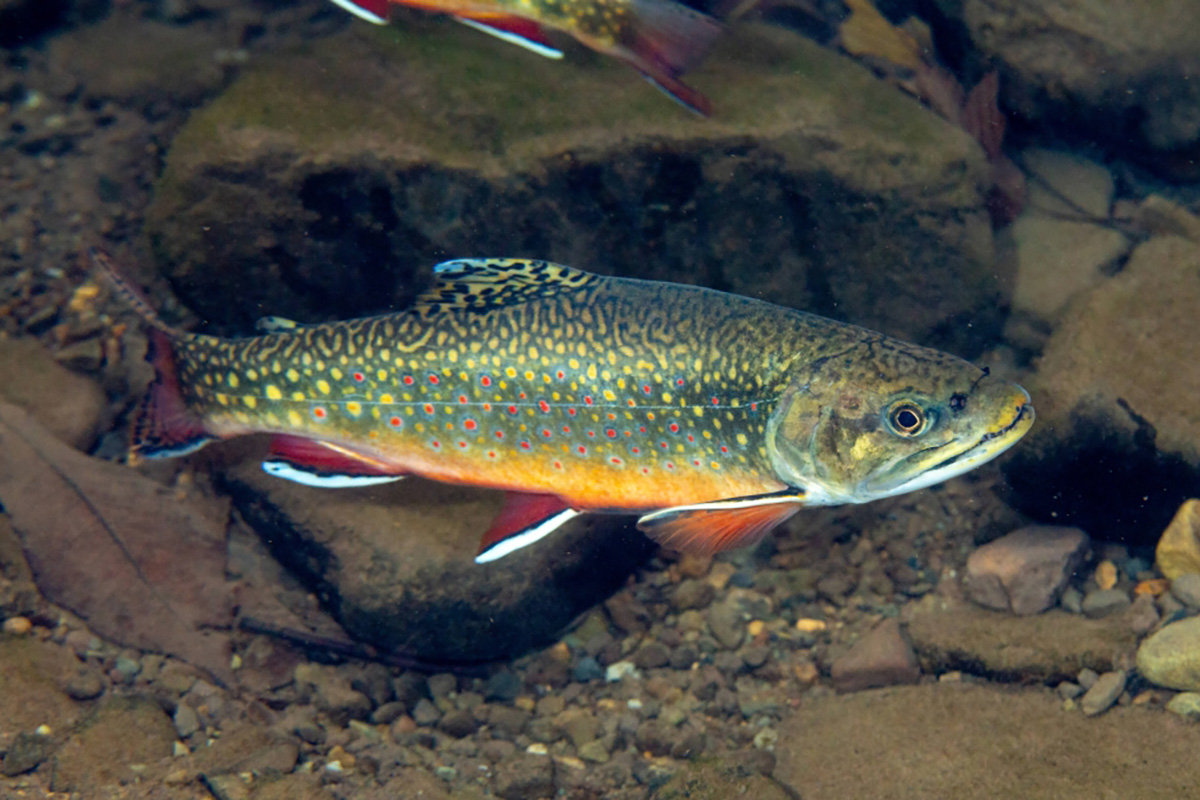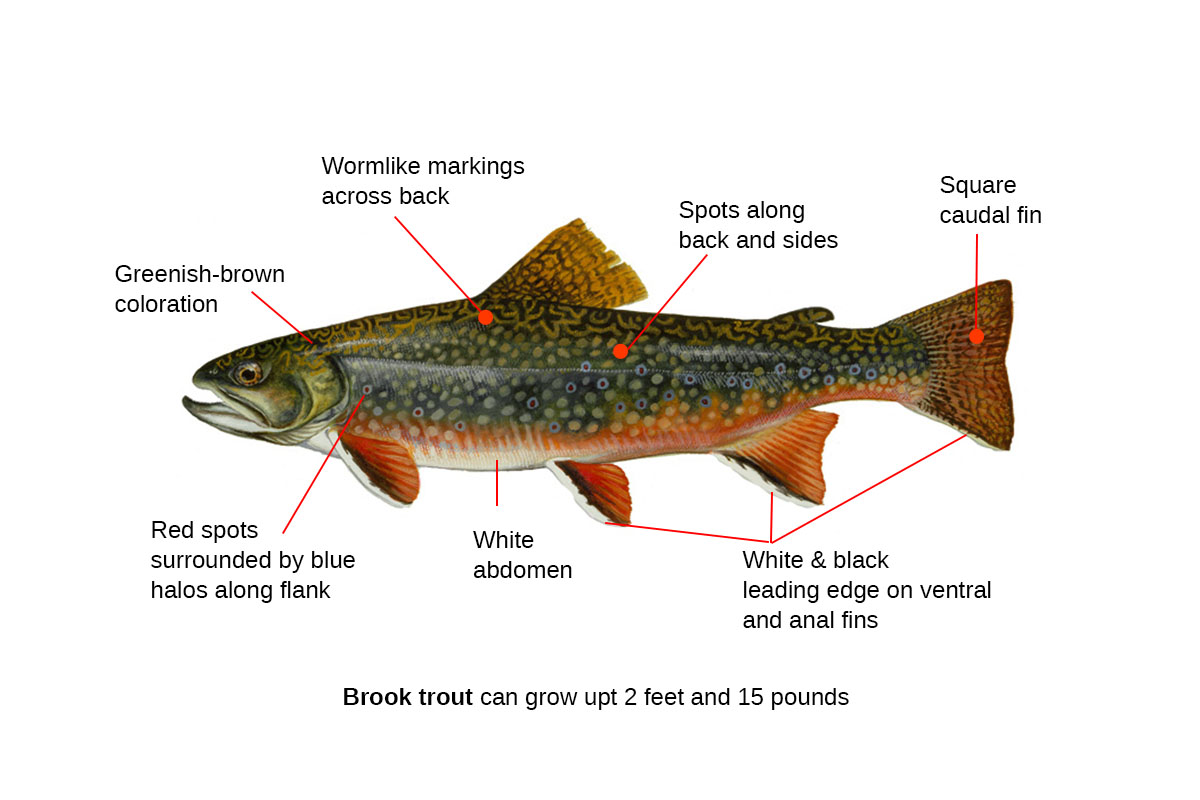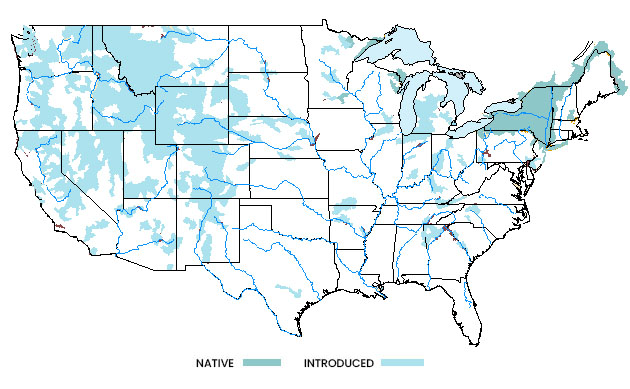The Brook Trout is one of the most sought after gamefish of northeast North America. It a fun fish to catch and makes an excellent table fare. Brook Trout are found in rivers and lakes throughout the northeastern United States and Canada in cooler waters. The most popular technique for catching Brook Trout is Fly fishing using a long fly rod. Brook Trout can also be caught using a spinning rod with spinners, lures, flies and insects.

How to identify a Brook Trout
Brook trout have an elongated and compressed body, with a square tail and squiggl, wormlike patterns along their back and on the head. They are typically a dark greenish-brown color along ther back, lighter along their sides, with a white abdomen. Their sides are covered with white spots toward their back fading into red spots surrounded by blue halos moving along the flank toward the underbelly.

The Brook Trout has white edging on its lower pectoral, anal and pelvic fins. It has curved bold black markings along the dorsal fin. During spawning, the lower sides and abdomen of male Brook Trout become a vibrant red-orange with black edging. Sea-versions of Brook Trout are often an iridescent silver-purple color with red markings. All of Brook Trout’s fins lack spines and have soft rays.
In larger lakes Brook trout can grow to over 2 feet and 15 pounds. In most rivers and streams an average Brook trout is between 6 and 12 inches and weigh 1 to 5 pounds.
Identifying characteristics:
- Greenish-brown coloration
- Wormlike markings across back
- Spots along back and sides
- Red spot surround by blue halos along flank
- Square tail
- White & black leading edge on ventral and anal fins
- White abdomen
Where to catch Brook Trout
Brook Trout’s native habitat includes streams, rivers and lakes throughout the Northeastern United States and central Canada. They are also found in the Great Lakes and Canadian Maritimes. Rarely will you find Brook Trout in waters over 68 degrees °F and Brook Trout cannot survive long in water above 80 °F. Brook Trout were first introduced at higher elevations in the Northwest United States, and today, it’s found from central Canada south into deep Texas (almost reaching Mexico). Brook Trout are now found in parts of Europe and Argentina.

The following are habitats where you can catch Brook Trout:
- Current Edges
- Dams and Falls
- Drop-offs
- Eddies
- Outside of Bends
- Overhanging Trees and Bushes
- Riparian Zones
- Rivers and Streams
- Rock and Boulder Pockets
- Undercut Banks
How to catch Brook Trout
Fly fishing with a long rod and fly is the most popular method for catching Brook Trout. Other methods for catching Brook Trout include spin casting with spinners, plugs, spoons, jigs, minnows, plugs, worms and live insects.
The following are effective fishing methods and techniques for catching Brook Trout:
Best Lures, Bait & Tackle to catch Brook Trout
Flies are the preferred bait when fishing for Brook Trout. However, Brook Trout will also bite a number of lures including spoons, jigs and plugs. Minnows, worms and live insects are also a preferred bait for catching Brook Trout.
The following are fishing lures, bait and tackle that can be used to catch Brook Trout:



